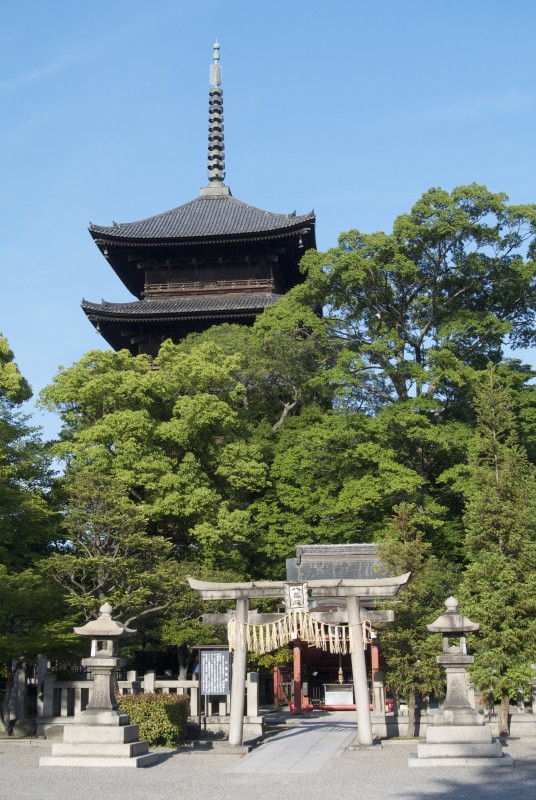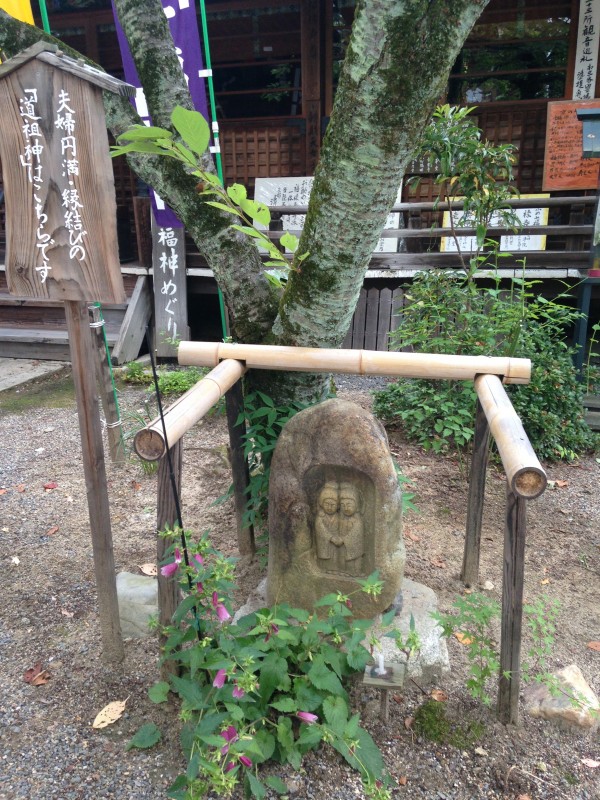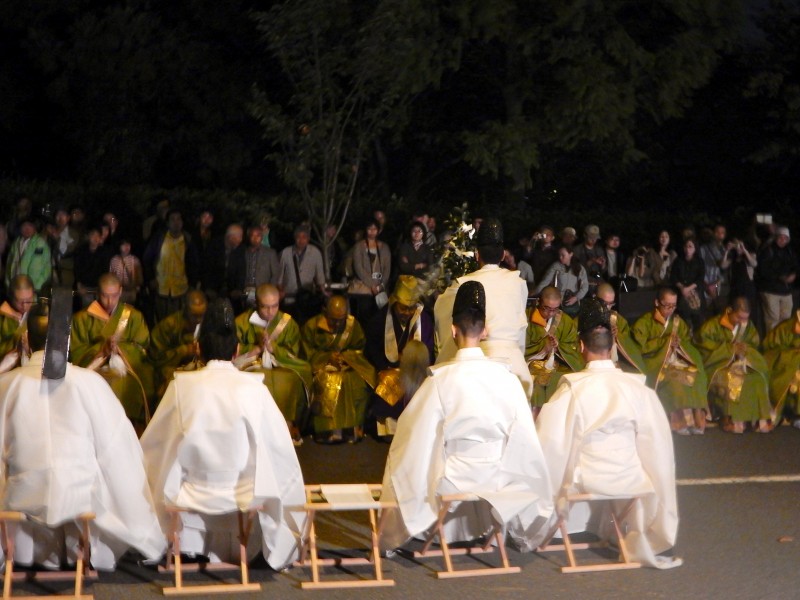The question of what exactly constitutes the Japanese tradition remains pertinent to the current debate over what direction Shinto should take. Some arguments are informed by State Shinto, some by the syncretism of Edo times, some by a mythical time before ‘foreign Chinese elements’ arrived.
One of the leading Shinto theorists is the conservative scholar Takeshi Umehara (born 1925), former director of of the International Research Center for Japanese Studies. Unlike others on the right, he does not favour a return to the values of the prewar era, and in the passage below he argues against the idea that the Meiji Constitution and Rescript on Education (1889/1990) were more Japanese than the present postwar constitution. It was translated for Japan Focus by Yusei Ota and Gavan McCormack, and posted in Japan Focus on July 12, 2005.
**************
Takeshi Umehara writes…
From the time of Prince Shotoku [574-622], Buddhism was Japan’s official religion, but it soon merged with Shinto, the religion of the Japanese people from Jomon [neolithic] times. The merger of Shinto and Buddhism, started by Gyoki [668-749] and Saicho [767-822], and perfected with Kukai’s [774-835] esoteric Buddhism (Shingon-Mikkyo), lasted as Japan’s tradition until the end of Edo.
However, as the Meiji government fell under the ideological sway of narrow-minded “National Learning” (Kokugaku) scholars, they set about implementing policies designed to separate the Kami and the Buddha and to demolish Buddhism. In the end they killed off not only the Buddha but the Kami too, and in the space created by the absence of both Buddha and Kami they set the emperor as the new divinity. This process may be described as the creation of “New Shinto” [or State Shinto].

Torii and pagoda, symbols of Shinto and Buddhism, here complement each other within the grounds of Toji temple
This New Shinto contributed to making Japan a power comparable to the Western states, by internally consolidating the political control of the Satsuma-Choshu-led government that replaced the Tokugawa shogunate and by externally focusing the power of the whole nation under the emperor.
The philosopher, Watsuji Tetsuro [1889-1960], set out in his war-time book The Philosophy and Tradition of the Philosophy of Revering the Emperor to prove that the ideology of seeing the Emperor as a god was a Japanese tradition, but he was not successful.
The idea of the Emperor as a deity can be seen in the Kojiki and Manyoshu (8th century) and in texts such as the Jinno Shotoki (14th century), but it was not until after the middle of the Edo period (circa mid-17th century) that such ideas became popular and they were then utilized in the process of overthrowing the Tokugawa shogunate.
Under such religion, Japan developed as a modern state, became a great power, plunged into the “fifteen year war”, and met the miserable fate of defeat. Bertrand Russell raised the question of how Japan, where no one was allowed to question the divinity of the head of state, could have become a modern state. After the war, under the orders of General MacArthur New Shinto was rejected, and an edict declaring the humanity of the Showa emperor [Hirohito] was issued. It seems bizarre that, in the 20th century where scientific thinking dominated the world, the Emperor should have had to issue an edict declaring himself human.
I met the Showa Emperor several times and could not help seeing him as a genial old man who loved the study of biology. How painful it must have been for such a person to play the role of a god. Mishima Yukio totally rejected the announcement of the emperor’s humanity and wrote in his novel Voices of the Heroic Spirits (Eireitachi no koe) that the emperor should have insisted on his divinity.

An enmsubi (good relations) tree, associated with Shinto but here within a Buddhist temple, indicative of the way the two religions are tied together
I believe, however, that the real modern Japan started from this declaration of the emperor’s humanity. The fact of the present emperor alluding to Takano-no-Niikasa, the mother of Emperor Kanmu and the descendant of King Bunei of Paekche, by saying that he “feels an affinity for Korea” and telling the zealous promoters of the movement to raise the Hinomaru (national flag) and sing the Kimigayo (anthem) that “it is best for them not to be imposed by force” – something that even a liberal academic could not easily say – leads me to think that the members of the imperial family are very liberal, and probably are themselves inclined to oppose the kind of Emperor system spelled out in the Imperial Rescript on Education.
Let me repeat. The Imperial Rescript on Education is not something rooted in Japanese tradition. Is it not rather the case that revival of the Imperial Rescript on Education would allow politicians who have neither knowledge nor virtue, and who have no love whatever for traditional culture but care only for their self-interest, to make the people do their will by representing it as the order of the emperor? It seems to me that the only way to make the Japanese people truly moral is to have them come to a deep understanding of the Japanese tradition of reverence for both Kami and Buddha.
*********************************
Umehara Takeshi, long the director of the International Research Center for Japanese Culture (Nichibunken) in Kyoto, is the author of numerous works on Japanese and Asian philosophy, archeology and history. For other essays by Umehara, see Japan Focus No. 135 and 167.
Umehara claims the 7th century Ritsuryo state was the beginning of State Shinto, with texts and rituals modelled on Taoism. He also thinks ‘original Shinto” is preserved in the fringes of Japan in the Ryukyu and Ainu traditions which are marked by outdoor rather than shrine worship – an inspiration for all free spirits who reject the nationalism of modern Shinto and wish to return to the roots of the religion.

Shinto priest at the Awata Jinja festival purifying Buddhist priests, who chant sutra in response


Prof. Umehara offers a very valuable insight in the roots of Japanese tradition. However, where he limits the scope of original shinto to Ryukyu and Ainu tradition, I prefer a wider scope, which is inspired by the daring hypothesis of Allan Grapard in his article “The Shinto of Yoshida Kanetomo”, in Monumenta Nipponica Vol. 47, No. 1 (Spring, 1992), pp. 27-58). Here he proposed a theory that originally Koguryo, Silla, Paekche (Korea), Kyushu and Wa (Japan) were not separate states, but formed together a “Thalassocraty” or Sea State. The culture of this Thalassocraty is also part of original shinto, or Ko-shinto. The recent nomination of the Munakata region including Okinoshima as a World Heritage Site hopefully will be an incentive for new research that explores the Korean connection with Ko-shinto.
Thanks Paul, that’s very interesting and I shall look up Grapard’s article when I get a chance. The Korean connection with Ko-shinto sounds like a fruitful field of research…